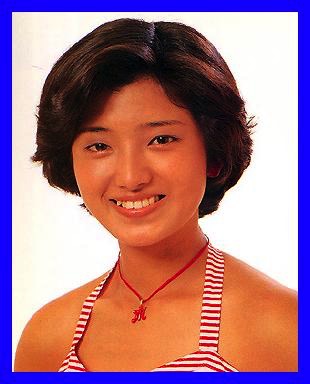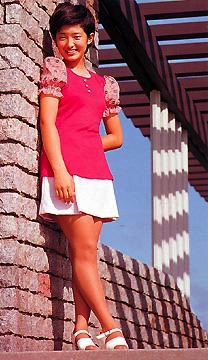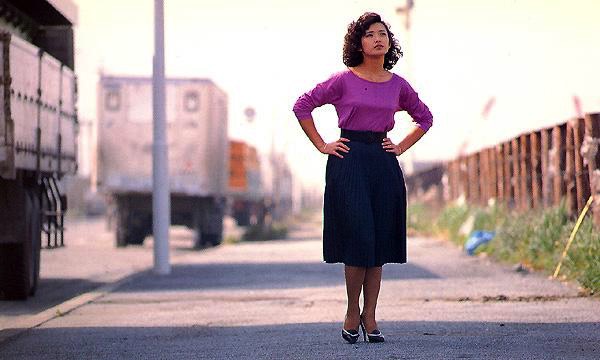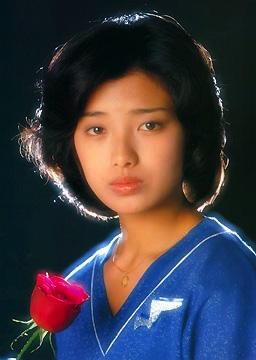MOMOE YAMAGUCHI
One of the most famous, and enigmatic idols in the history of Japan's entertainment industry is the legendary Momoe Yamaguchi. Born five days after your humble author on January 17, 1959, Momoe's beginnings were quite humble as she and her younger sister Toshie were raised by her mother, an often told story was that Momoe delivered newspapers to earn enough money to buy a desk as the family struggled financially and the father was absent. Things changed for her when she tried out for Star Tanjo when she was 13, finishing second. Initially Momoe was teamed with two other young newcomers, Masaki Mori and Junko Sakurada, in a group called Hana No Chusan Trio (Three Flowers Trio). Of the three, Momoe was considered by most as the least likely to succeed.
Mori was thought to have the bigger and better voice, and Sakurada had a more outgoing, bubbly personality while Momoe was looked upon as being somewhat gloomy. Momoe's first single in 1973, “Toshigoro (Adolescence)" sold a decent but unremarkable 70,000 copies, but her second single, “Aoi Kaijtsu (Green Fruit)” was a huge hit. Part of what made it a success were the suggestive lyrics, which translated to: “if you want me, you can do anything you want to me, and I won’t care if it becomes gossip”. Her third single, “Hito Natsu No Taiken (One Summer’s Experience”)”, also had suggestive lyrics which roughly said, “I will give you a girl’s most important thing... it’s okay if you make me cry, it is just once... and then throw me away”. Later in her career Momoe tried to distance herself from these songs, saying they weren't from her heart. However, she was able to build on the popularity gain from these racy songs by then releasing songs that portrayed a strong woman overcoming being used and abused, and now standing up boldly for herself. These songs were called “tsuppari" (tough, defiant) and perhaps were the perfect metaphor for Momoe's career.
In 1974, Momoe began making movies, starting with "Izu No Odoriko" (Dancer of Izu) with 22-year old Tomokazu Miura, and she excelled as an actress as well. The duo made eleven movies together, mostly being predictable love stories, and in real life, they became a couple. The media loved them together and took to calling them the “golden combination”. When Candies retired from performing in 1978, saying they wanted to return to living ordinary lives, that was said to have given Momoe the idea of following suit as she had grown weary of the show business grind, so, in 1980, she married Miura and, at the tender age of 21 when she was the height of her popularity as both a singer and actress, Momoe retired to become a wife and raise a family. Other than writing her autobiography "Aoi Toki" (Green Time), Momoe has, to this day, steadfastly refused to return to show business, content with living a private life, even though her every appearance in public is scrutinized and covered like a blanket by the media. Momoe's legend has been defined every bit as much by her selfless devotion to her husband and family (she has two sons) which led her to turn her back on show business at so young an age as by her career itself which, while short, had been spectacular.













RIGHT: Momoe and Tomokazu Miura at their 1980 wedding
